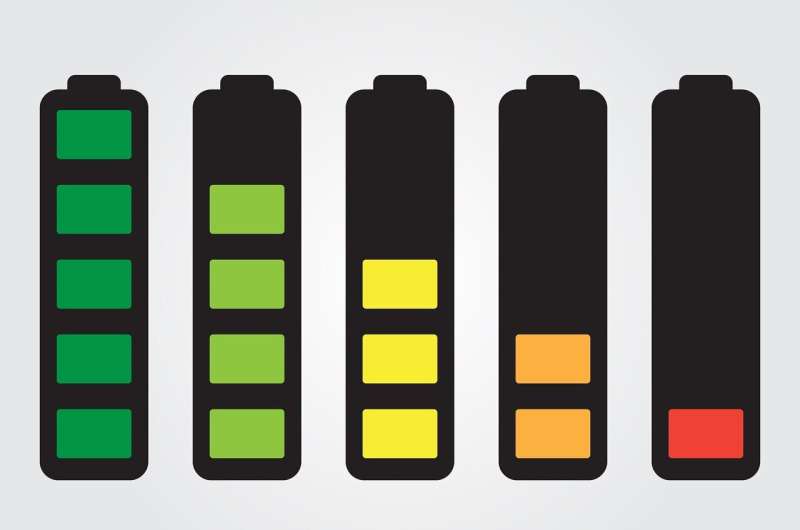Credit: CC0 Public Domain
The kinetics of Li-ions transport across the electrolyte and the SEI is usually the rate-determining step in the Li plating-stripping process. Before electroplating on the anode surface, Li-ions migrate from a cathode to an anode through pores in a separator that is filled with electrolytes. The Li metal surface facing the pores in the separator becomes enriched with Li-ions due to their accumulation inside the pores. Thus, the fresh Li metal selectively deposits on these regions with a higher concentration of Li-ions, forming an uneven Li metal surface, as well as dendritic Li growth.
Recently, the research group of Professor Hengxing Ji of the University of Science and Technology of China presents a coating layer formed by COF-LZU1 particles on a commercial polypropylene (PP) separator to redistribute the Li-ions passing through the PP pores.
The interlayer comprises closely packed particles of a Schiff-base covalent organic framework (COF) COF-LZU1, which is an electronic insulator with a high chemical and thermal stability containing well-aligned channels of ~1.8 nm in diameter. The nanochannels in the COF-LZU1 particles in the coating layer hinder the migration of anions between the electrodes, leading to a high Li-ion transference number of 0.77±0.01, which has long been considered to increase the energy efficiency of Li batteries.
In addition, Li-ions move through the COF-LZU1 layer, analogous to beads passing through a Galton Board. This process, for a large number of beads, statistically approximates the normal distribution. In this regard, the COF-LZU1 layer serves to effectively redistribute the Li-ions that pass through the pores of the commercial separator so as to yield a uniform distribution, which can transform the mossy or dendritic Li to a smooth Li deposition, rendering improved battery performances. The mechanism of the behaviors of the COF-LZU1 layer can be extended to different types of porous materials to regulate ion distributions in different energy storage or conversion systems.
More information: Huanyu Xie et al, Redistribution of Li-ions using covalent organic frameworks towards dendrite-free lithium anodes: a mechanism based on a Galton Board, Science China Chemistry (2020). DOI: 10.1007/s11426-020-9796-9
Provided by Science China Press
























